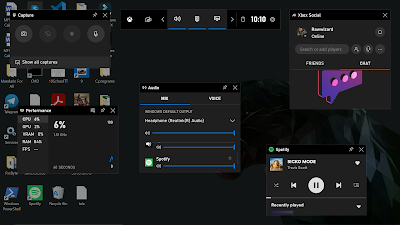Optimize Windows 10 OS for Better Performance.
Windows operating system is not any less in regard to performance compared to its contemporary like macOS and Linux. In this article, we will look into various ways you can optimize the performance of your Windows 10 machine.
Here are 9 ways you can optimize the performance of your Windows 10 computer.
1)Upgrading Windows: Updating Windows contains new features, better security, eliminates bugs, and also included performance enhancements. To update Windows, follow these steps –
Open Settings.
Click on Update & Security.
Click on Windows Update.
Click the Check for updates button and download the updates.
2)Disk Clean-up: Disk Clean-up is a computer maintenance utility tool used to remove temporary files, files in the recycle bin, and other items that you no longer need. To do so follow the below steps:
Type Disk clean-up in the search bar on the taskbar.
Select the drives you want to clean.
Select the folder or file types to get rid of.
Select OK.
To gain more space, you can also delete system files as follows:
In Disk Clean-up, select Clean up system files.
Select the file types to get rid of.
To get a description of the file type, just click on it. Select OK.
3)Updating Device Drivers: A device driver is a computer program that operates or works intermediate between the operating system and particular devices to communicate. So, it is necessary to update device drivers by using these steps:
Open Start.
Search for Device Manager.
Expand the branch for the device you want to update.
Right-click the device, and select the Update Driver option.
4)Optimize your Hard Drive: Fragmentation occurs when the allotted memory is larger than the memory requested by the program, then the difference between allotted and requested memory is known as fragmentation. So, we need to run a disk defragmenter to rearrange fragmentation which makes drives work more efficiently.
Select the search bar on the taskbar and enter defrag.
Select Defragment and Optimize Drives.
Select the disk drive you want to optimize.
Select the Optimize button.
5)Turn off Tips and Notifications: We can also stop some background services that provide tips and suggestions to use Windows. To do that follow these steps:
Search the “Notifications and actions” in the search bar on the taskbar.
Uncheck Get tips, tricks, and suggestions as you use windows.
6)Change the size of Virtual Memory: A paging file is an area on the hard disk that Window uses as if it were RAM. We can adjust this paging file size to improve window performance. To change the size of virtual memory follow the below steps:
Select the search bar on the taskbar and open View advanced system settings, which will open System Properties.
In System Properties, select the Advanced tab.
Then select Settings under Performance.
In Performance Options, select the Advanced tab.
Then select Change under the Virtual memory.
By default, Windows automatically manage paging file size for all drives check box is checked we can uncheck it to makes changes.
Under Paging file size for each drive, click on the drive that contains the paging file to change the paging file size.
Click Custom size, type a new size in megabytes in the Initial size (MB) or Maximum size (MB) box, click Set, and then click OK.
Restart your device.
7)Check for Viruses and Spyware: Virus and spyware can not only slow down your device but even can corrupt your data and do identity theft. So, it’s better to scan for viruses and spyware to remove them by using Windows Defender/Security or other anti-spyware programs. To use Windows Security follow the below steps:
Select the search bar on the taskbar and enter Windows Security.
Select Virus and threat protection and click on the Scan option.
Select one of the scan options like Quick Scan, Full Scan, and Custom Scan.
Press Scan now button.
8)
Disable Background Apps: There may be some bloatware (pre-installed applications) on your Windows device which runs in the background even if you are using them. You can even disable the background applications by following the below steps:
Search the “Background applications” on the search bar.
Disable the application which is not required.
9)
Adjust for Best Performance: Lowering or customizing the settings of Windows visual effects will increase the performance of your devices. Follow the below steps to do so:
Search “System” in the search bar on the taskbar.
Click Advanced system settings and it will open the System Properties menu.
On the Advanced tab under Performance, click Settings and it will open Performance Options.
Click on the Visual Effects tab, either choose to adjust for best performance or go for Custom.












Very informative! 👏🏻
ReplyDeleteWould love to definitely try this 💯
ReplyDelete